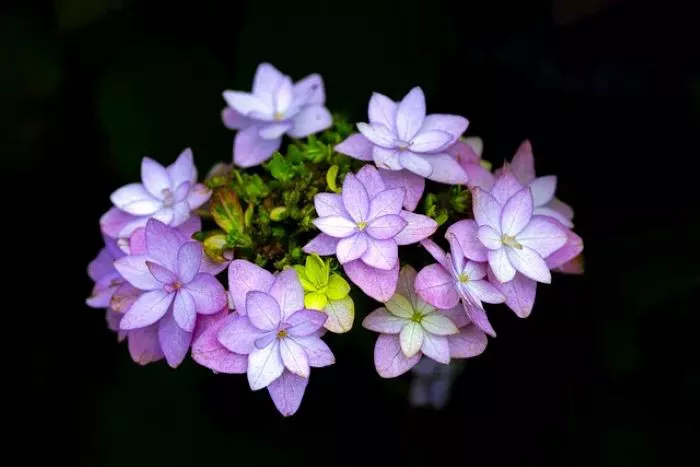Starting wildflower seeds indoors is a rewarding and straightforward process. It allows gardeners to get a head start on the growing season and ensures that seedlings are strong enough to thrive when transplanted outdoors. This article provides a detailed guide to successfully starting wildflower seeds indoors, covering essential steps, tips, and best practices.
Understanding Wildflower Seeds
Wildflowers are beautiful plants that grow naturally in the wild. They come in various species, colors, and sizes. Many gardeners choose wildflowers for their low maintenance and ability to attract pollinators. Starting these seeds indoors can lead to earlier blooms and a more robust garden.
Choosing the Right Seeds
Before starting, it is crucial to select the right wildflower seeds. Consider the climate and soil conditions in your area. Some wildflowers thrive in specific environments. Research local native species, as they are often best suited for your region. Look for seed packets that provide information on the growth requirements and blooming times of the flowers.
Gathering Materials
To start wildflower seeds indoors, you will need several materials. Gather the following items:
Seed trays or pots
Seed starting mix
Water
Plastic wrap or a humidity dome
Labels and a pen
Light source (grow lights or a sunny windowsill)
Using high-quality seed starting mix is essential. This mix is lighter and drains better than regular potting soil, which helps prevent seed rot.
Preparing the Seed Trays
Begin by preparing your seed trays or pots. Fill them with the seed starting mix, leaving about half an inch of space at the top. Gently press down on the mix to eliminate any air pockets. Water the mix lightly to ensure it is moist but not soggy. The moisture will help the seeds germinate.
Sowing the Seeds
Once the trays are prepared, it is time to sow the seeds. Follow the instructions on the seed packet for specific planting depths, as different species have varying requirements. Generally, small seeds can be sprinkled on the surface, while larger seeds may need to be buried slightly.
After placing the seeds in the soil, lightly cover them with more seed starting mix if necessary. Use a gentle touch to avoid displacing the seeds. Label each tray or pot with the seed type and planting date for easy identification.
Creating the Right Environment
Wildflower seeds require specific conditions to germinate successfully. Cover the trays with plastic wrap or a humidity dome to maintain moisture. This helps create a greenhouse effect, which is beneficial for seed germination. Place the trays in a warm location, ideally between 65°F and 75°F (18°C to 24°C).
Monitor the moisture levels regularly. Remove the plastic wrap once the seeds begin to sprout to prevent mold growth. Ensure that the seedlings receive adequate light. If you are using grow lights, position them about 2 to 4 inches above the seedlings and keep them on for 12 to 16 hours a day.
Watering and Care
Proper watering is crucial for the health of your seedlings. Keep the soil consistently moist but not waterlogged. Use a spray bottle or a gentle watering can to avoid disturbing the delicate seedlings. As the plants grow, you may need to water more frequently.
Fertilizing is usually not necessary until the seedlings develop their first true leaves. If desired, you can use a diluted, balanced fertilizer to promote healthy growth. Follow the manufacturer’s instructions for application rates.
Thinning Seedlings
As the seedlings grow, some may become crowded. Thinning is essential to ensure that each plant has enough space to develop properly. When seedlings have two to three true leaves, thin them by snipping the weaker ones at the soil level with scissors. This process helps reduce competition for nutrients and light.
Hardening Off Seedlings
Before transplanting your wildflower seedlings outdoors, they need to acclimate to the outdoor environment. This process is called hardening off. Start by placing the seedlings outside for a few hours each day in a sheltered location. Gradually increase their time outdoors over a week or two. This helps the plants adjust to changes in temperature, light, and wind.
Transplanting Outdoors
Once the seedlings have hardened off and the outdoor conditions are suitable, it is time to transplant them. Choose a cloudy day or late afternoon to minimize stress on the plants. Prepare the garden bed by removing weeds and loosening the soil. Make holes in the soil that are slightly larger than the root ball of each seedling.
Carefully remove the seedlings from their trays, taking care not to damage the roots. Place each seedling in its hole and cover it with soil. Water the transplants thoroughly to help them settle into their new environment.
Maintaining Your Wildflower Garden
After transplanting, continue to care for your wildflower garden. Water the plants regularly, especially during dry spells. Once established, many wildflowers are drought-tolerant and require less maintenance. Consider mulching around the plants to suppress weeds and retain moisture.
Monitor for pests and diseases, but avoid using harsh chemicals. Many wildflowers are resilient and can withstand some level of pest pressure. Embrace the natural ecosystem, as beneficial insects can help control harmful pests.
Conclusion
Starting wildflower seeds indoors is a simple and effective way to create a vibrant garden. By following these steps, you can ensure that your seedlings grow strong and healthy. With careful planning and attention, your wildflower garden will flourish, providing beauty and support for local wildlife. Enjoy the process and the rewards of nurturing your plants from seed to bloom.


